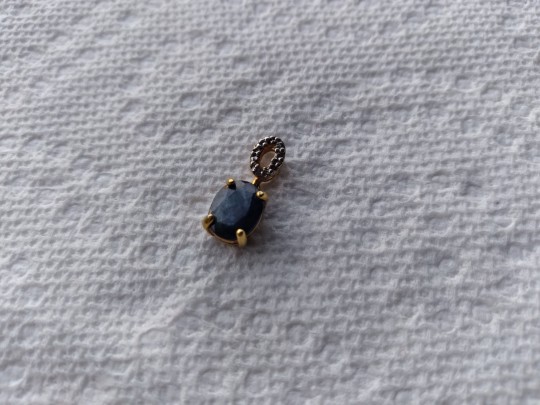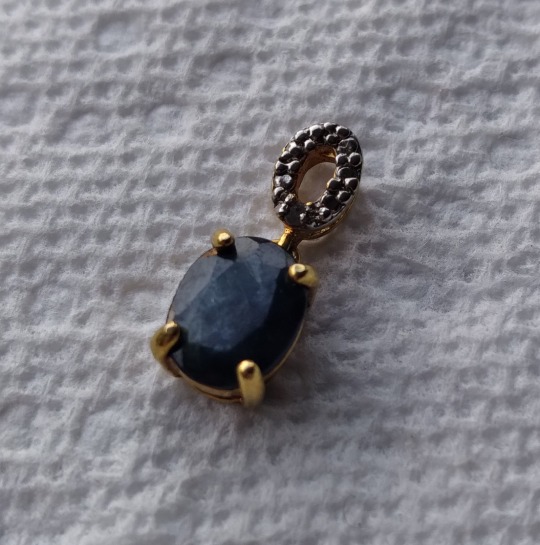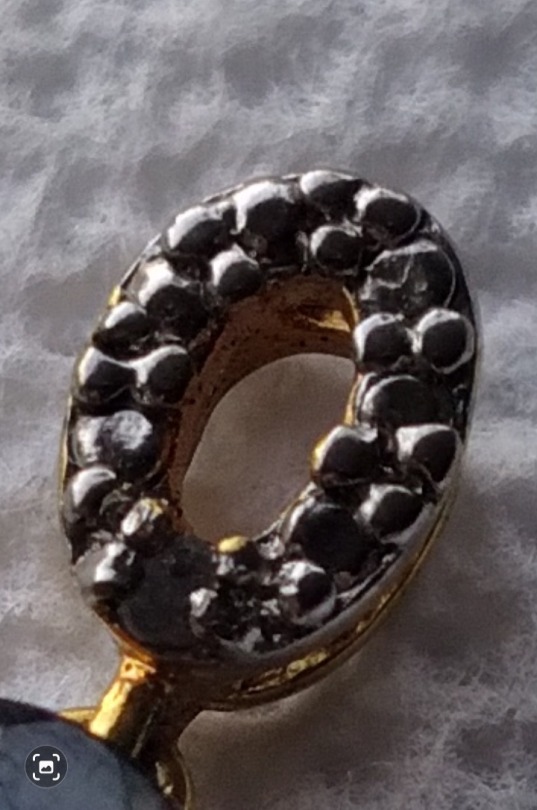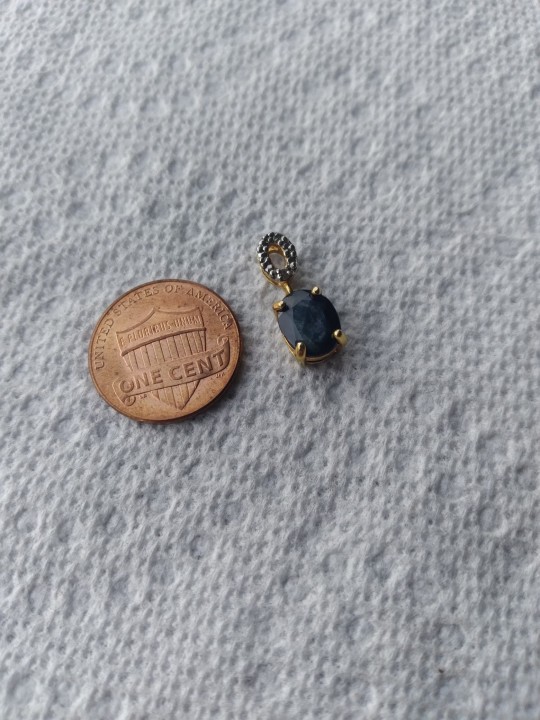#82.5 pure gold
Text






Just had this legitimately appraised at $200. (as of January 6th, 2023)
I'm selling it for $130. I’m also offering free shipping.
Originally crafted by Dee Berkley Jewelers. 825 (19K) gold setting, Sapphire stone. 825 DBJ engraving on the back.
Message me if you’re interested.
#Dee Berkley#825 DBJ#82.5 pure gold#sapphire#necklace charm#19K#jewelry#gold jewelry#for sale#Dee Berkley Jewelers
0 notes
Text
realme launches realme Pad, realme Cobble Bluetooth Speaker and realme Pocket Bluetooth Speaker

realme introduced its first-ever tablet, the realme Pad, an ultra-thin and light product, to entertain on the go, be more accessible for e-learning, and work lighter and suitable for all scenarios. In addition, realme also launched its Bluetooth devices - realme Cobble Bluetooth Speaker and realme Pocket Bluetooth Speaker.

realme Pad
realme Pad is powered by an octa-core MediaTek Helio G80 gaming processor. It comes with a 10.4-inches WUXGA+ (Widescreen Ultra eXtended Graphics Array Plus) full screen, up to 2000×1200 pixels screen resolution and a screen-to-body ratio of 82.5%, proving users a more immersive viewing experience and crystal-clear details. realme Pad comes with metallic design body and is as thin as 6.9 millimeters and weighs 440 grams. It also features Dolby Atmos enabled Quad speakers. The tablet is equipped with a 7100mAh battery. realme Pad is also equipped with an 18W quick charge, the fastest charging in the segment, for quickly recharging and supports reverse charging too. realme Pad also features an 8MP ultra-wide-angle front camera and features a 105° ultra-wide-angle letting users capture more of their surroundings when they take a selfie or attend video conferences.
realme Pad will be available in two colours - Real Grey and Real Gold, and three storage and connectivity variants, 3GB+32GB (Wi-Fi)) priced at INR 13,999, 3GB+32GB (Wi-Fi + 4G) priced at INR 15,999, and 4GB+64GB (Wi-Fi + 4G) priced at INR 17,999 and supports up to 1TB Memory expansion. The first sale for 3GB+32GB (Wi-Fi + 4G) and 4GB+64GB (Wi-Fi + 4G)is scheduled for 16th September, 12 noon onwards on realme.com, Flipkart & Mainline channels. The 3GB+32GB (Wi-Fi ) variant will be coming soon.
realme Cobble Bluetooth Speaker
realme Cobble Bluetooth Speaker, a pure bass powerhouse, is a powerful little device. It weighs 200g, feeling just like a big cobble in the user's hands. It features 9 hours of battery life with 1500 mAh large battery, a 5W dynamic bass boost driver, an extra passive radiator, Bluetooth 5.0, stereo pairing, 3 equalizer presets IPX5 water-resistant certification, and 88ms super low latency game mode. With a Type-C charging port, it will be convenient and easy to use. The speaker will be available in two colours-, Metal Black and Electronic Blue. The first sale is scheduled for 15th September, 12 noon onwards on realme.com, Flipkart & Mainline channels.
realme Pocket Bluetooth Speaker
realme Pocket Bluetooth Speaker, will fit in almost any pocket, enabling users to take it with them and listen to music wherever they want. It is 101mm long, 60.9mm wide, and 33mm thick and has a beautiful and lightweight design. Equipped with a built-in 600mAh battery, it comprises 6 hours of battery life into a tiny package and users will be able to play 120 songs back-to-back on a single charge. realme Pocket is equipped with a music Studio's dynamic Bass Boost+ enhancement solution, features 3W dynamic boost and a passive radiator, Bluetooth 5.0, IPX5 water-resistant certification, smart-touch functions, a USB Type-C charging port, stereo pairing and three EQ presets for customizable sound quality. The speaker will be available in two colours, Classic Black and Dessert White. The first sale is scheduled for 15th September, 12 noon onwards on realme.com, Flipkart & Mainline channels.
Read the full article
0 notes
Text
Hyperallergic: Chronicling the Rivalry and Camaraderie of Michelangelo and Sebastiano
Sebastiano del Piombo, “The Judgement of Solomon” (c. 1506-9) tempera (lower layers) and oil on canvas, traces of gold leaf (in half-dome) 208 x 318 cm, Kingston Lacy, the Bankes Collection (National Trust) (© National Trust images by Derrick E. Witty)
LONDON — It is fair to say Sebastiano del Piombo is not the first name that springs to mind when thinking of High Renaissance Italy — specifically the artistic hub of Rome during the early 16th century. That role goes to Michelangelo, then working on the immortally iconic Sistine Chapel. Considering that the new exhibition, Michelangelo and Sebastiano, in London’s National Gallery promises in its press release the “first ever exhibition devoted to the creative partnership” between these two artists, and thinking of this year’s earlier Caravaggio show remarkable for its lightness on Carvaggio’s actual paintings, one’s immediate dread is that Michelangelo’s ticket-selling name has been shoehorned into a study seeking to elevate an obscure contemporary of his. How delightful it is then that the show methodically and academically does what it says on the tin: offer compelling instances of collaboration, consistently demonstrated with convincing examples, and reveal the twists and turns of a 25-year friendship and artistic relationship. A happy bonus is how this survey paints an image of a deliciously Machiavellian art world in Rome — all scheming competition and heated rivalry.
Michelangelo “The Entombment (or Christ being carried to his Tomb)” (c. 1500-1) oil on poplar, 161.7 x 149.9 cm (© The National Gallery, London)
As such, it quickly becomes clear that curator Matthias Wivel is not out to champion del Piombo as an unsung master. Throughout the show, his work is shown to be decidedly clunky and lacking in comparison to the finesse and genius virtuosity of Michelangelo. Beginning with the Venetian-trained del Piombo’s arrival in Rome, the focus is exploration of the technical differences between the two artists within the context of fiercely competitive art patronage in Rome. We are thus invited to compare the working method behind Michelangelo’s “Virgin and Child with Saint John and Angels” (c. 1497) — its unfinished state revealing meticulously exact linear planning, green coloring of the dead flesh, and a piecemeal approach regarding covering the canvas surface — with del Piombo’s also unfinished “Judgement of Solomon” (c. 1506–09). With its underdrawing clearly showing hesitancy and a late-stage change in composition characteristic of an improvisatory way of working, it contrasts with Michelangelo’s determined precision. Del Piombo’s preference for an overall painterly fuzziness that evokes mood and atmosphere is consistent with the Venetian school of painting. Elsewhere, del Piombo’s Saints Bartholomew and Sebastian (c. 1510–11) from the doors of the Church of San Bartolomeo in Venice, similarly show a kind of all-over sfumato that fuzzes outlines, giving a murky, moody tone. In his paintings there is none of the distinguishing dynamism of the Florentine Michelangelo’s solid figures and strong composition.
Sebastiano del Piombo “The Visitation” (1518-19) oil on canvas, transferred from wood, 168 × 132 cm Musée du Louvre, Département des Peintures, Paris (© RMN-Grand Palais (musée du Louvre) by Hervé Lewandowski)
This technical introduction to the two artists in the exhibition’s first room thus makes the story that del Piombo was actively promoted by Michelangelo as competition against his “detested” rival Raphael, all the more compelling. In an era of prodigious art commissioning by the ruling religious and political elite (most famously, the powerful Medici family), a highly cynical scene emerges in which del Piombo, specializing in oil painting (tempera being the more common medium), is championed by Michelangelo specifically as a challenger to the city’s only other big oil painter, Raphael. The National Gallery makes a convincing case of del Piombo seeing himself as being in direct competition with the famed colorist skills of Raphael via a progression of works showing del Piombo’s increasing tendency away from murky painting towards pure brilliant color. More juicy illustration of the two artists’ devious machinations in pursuit of patronage comes with the display of their correspondence: del Piombo says to Michelangelo in 1519, having just finished his Raising of Lazarus, “I beg you to persuade Messer Domennico [Boninsegni] to have the frame gilded in Rome, and to leave me to arrange the gilding, because I want to make the Cardinal realise that Raphael is robbing the Pope of at least 3 ducats a day for gilding .” Similarly, in 1520 following Raphael’s death, Michelangelo writes to Cardinal Bernardo Dovizi da Bibbiena persuading him to take on Sebastiano to “share in the work at the Palace, now that Raphael is dead,” humbling adding “You are always granting favours to men of esteem; I beg your Lordship to try out [the favour] with me.”
After Michelangelo “Pietà” (1975) (copy after “Pietà” (1497-1500) St Peter’s, Vatican City) plaster cast from five piece moulds, with wood and iron armature, 174 x 195 cm, Vatican Museums, Vatican City (© Photo Vatican Museums)
In terms of concrete art historical evidence, the show works brilliantly with a methodical presentation of clear examples of the cross-pollination of ideas and designs between the two artists. The Vatican museums have loaned the Gallery a 1975 plaster cast of Michelangelo’s “Pietà” of 1497–1500, shown opposite del Piombo’s Pietà, or “Lamentation over the Dead Christ” (c. 1512–16). (Enjoy it — this is the closest you’ll get to the sculpture; the real thing should never leave its bulletproof case at St. Peter’s cathedral in Rome.) Each piece has its monumental, centrally positioned Virgin arranged to be perpendicular to the horizontal Christ, yet del Piombo makes innovative changes by including a nocturnal setting. More thrilling is the adjacent drawing by Michelangelo: a study of hands (among other bits and bobs), which is placed directly in the line of sight of the Virgin’s hands in del Piombo’s “Lamentation.” So displayed, it’s extremely hard to defy the argument that the former was a preparatory drawing for the latter. If this isn’t exciting enough, on the back of the “Lamentation” panel are sketches the National posits as studies consistent with designs in the Sistine Chapel; suggesting Michelangelo used this panel to sketch out designs and ideas eventually used there.
Sebastiano del Piombo, after partial designs by Michelangelo, “Lamentation over the Dead Christ (Pietà)” (c. 1512-16) oil on poplar, 248 × 190 cm, Museo Civico, Viterbo (© Comune di Viterbo)
The same presentation occurs again for two main del Piombo showpieces, demonstrating a working relationship in which del Piombo blended into his oil painting drawings provided by Michelangelo. The near four-meter-tall “Raising of Lazarus” (1517–1519) — apparently del Piombo’s answer to Raphael’s “Transfiguration” (1516-20) — is surrounded by supporting drawings. Sensationally, del Piombo’s Borgherini Chapel in Rome has been reconstructed here using state of the art printing technology to add visual heft to the translation of Michelangelo’s preparatory drawings.
The rigorous, academic method of display absolutely makes this show. It is undeniable, looking at the key examples in the “Lamentation” and “Raising of Lazarus,” that there is little to distinguish del Piombo as a key Renaissance presence. The latter piece has been in the National’s collection since 1824, yet for all its scale and vibrant colour it somehow still feels uninspiring and workman-like. That del Piombo was not a Renaissance master of the level of Michelangelo is confirmed in the final room covering their parting of ways after
After Michelangelo “The Risen Christ” (c. 1897-8) (copy after the Risen Christ, 1519-21, Santa Maria sopra Minerva, Rome) plaster cast from approximately eight piece moulds consisting of approximately 81 individual pieces 251 × 74 × 82.5 cm, Statens Museum for Kunst, Copenhagen (© SMK Photo by Jakob Skou-Hansen)
1536 by which time Michelangelo has broken from his one-time collaborator, labelling him, according to the final room’s wall caption, “lazy.” Del Piombo’s latter works melt into generic Italian Renaissance fare. The show’s press has trumpeted much about the envelope-pushing reconstruction of the Borgherini Chapel, and boasted of some admittedly excellent loans. The Pietà copy, and the two versions of Michelangelo’s the Risen Christ — one from 1514, loaned by the San Vincenzo Monastery in Bassano Romano, the other a cast of its second version from Santa Maria sopra Minerva in Rome, both surrounded by exceptional preparatory drawings — are a very rare treat indeed. However, Michelangelo’s “Taddei Tondo” (1504–06) doesn’t count since it’s otherwise freely viewable in the Royal Academy, down the road, the presence of the Pietà copy, and the two versions of Michelangelo’s the Risen Christ — one from 1514 loaned by the San Vincenzo Monastery in Bassano Romano, the other a cast of its second version from Santa Maria sopra Minerva in Rome, both surrounded by exceptional preparatory drawings – are a very rare treat indeed.
Most importantly, the exhibition has successfully steered clear of unduly inflating the importance of del Piombo, or presented another painter as an excuse for yet more Michelangelo worshipping. It is fortunate that their 25-year friendship has proven ripe for examination. It provides a rewarding experience that overcomes the complaint by some critics that Michelangelo by nature just dominates any other artist on the bill.
Michelangelo & Sebastiano continues at the National Gallery (Trafalgar Square, London, UK) until June 25.
The post Chronicling the Rivalry and Camaraderie of Michelangelo and Sebastiano appeared first on Hyperallergic.
from Hyperallergic http://ift.tt/2qkhZCj
via IFTTT
0 notes